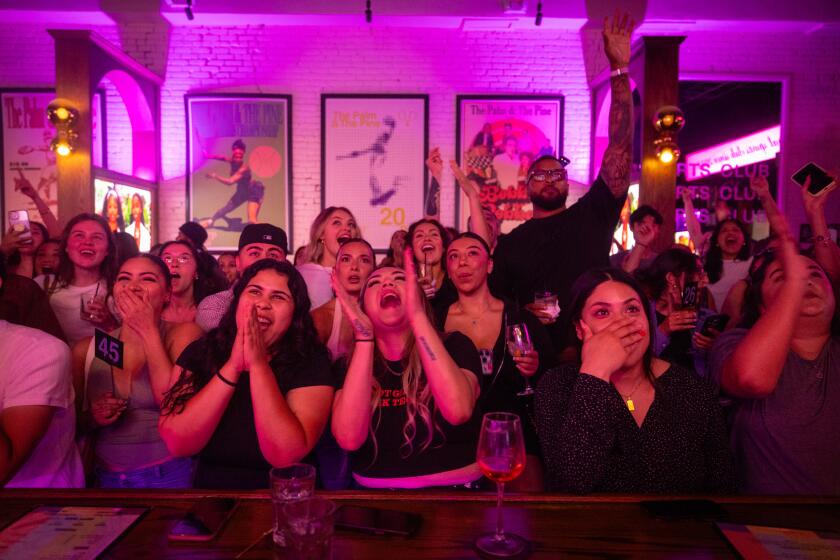Wilderness Adventure for Point Mugu Hikers
- Share via
To the Chumash, Boney Mountain was sacred, a place of ceremony and power. The tribal land at the base of the great mountain was called Satwiwa.
Today, the massive rock outcropping of Boney Mountain is preserved within the 6,000-acre Boney Mountain Wilderness in Point Mugu State Park. The mountain is high enough (about 3,000 feet) to occasionally receive some snow. Chaparral cloaks the upper slopes, while lowland areas are covered with oak and sycamore woodland.
This year the wilderness will be celebrating its 10th anniversary, and there are a variety of hikes in and near it.
Most hikers enter Point Mugu State Park from Coast Highway. Far fewer use the San Fernando Valley side or “back door” entrance to the park. The back door approach has some advantages, in particular the fine views of Boney Mountain.
Hikers begin their Boney Mountain adventure on National Park Service land--Rancho Sierra Vista/Satwiwa, on the northern boundary of Point Mugu State Park. Rancho Sierra Vista reflects the land’s history as a 1940s horse ranch, Satwiwa as an ancestral village site of the Chumash.
Some of the national park land has been designated as the Satwiwa Native American Natural Area. The Satwiwa Culture Center, a short walk from the trail head parking area, is open from 10 a.m. to 4 p.m. on Sundays. Sometimes the Chumash lead guided walks. Call the National Park Service for a schedule.
Today’s hike leaves from a National Park Service parking lot, where no fee is charged. After a half-mile or so of walking, hikers will enter Point Mugu State Park. There, along Big Sycamore Canyon Trail, hikers may find a state park ranger posted to collect the just-introduced, $2-per-hiker fee.
Entering Point Mugu State Park from the valley side gives the hiker a lot of options. You can make a beeline down Big Sycamore Canyon Trail to a lovely picnic ground/campsite. It’s called Danielson Camp by hikers, and Danielson Multi Use Area by state park officials.
Big Sycamore Canyon Trail is a paved road (closed to vehicles) from the trail head to Danielson Camp. It’s very scenic and leads to junctions with many dirt fire roads and foot paths. The road winds along the bottom of Sycamore Canyon, where some truly magnificent sycamores thrive. Most of what you see to your left (south and southeast) as you follow the road down-canyon is part of Boney Mountain Wilderness.
Remember to save some energy for the return hike. No matter which return route you select, it’s uphill back to the trail head.
Directions to trail head: From the Ventura Freeway (U.S. 101) in Newbury Park, exit on Wendy Drive. Head south for four miles, then turn west on Potrero Road for two miles. Follow the signs to the park’s parking lot on your left.
The hike: Begin hiking south along the closed fire road. You’ll soon spot the American Indian Cultural Center on your left, and join paved Big Sycamore Canyon Trail. The trail reaches a low ridge, then begins to descend, quite rapidly, into Big Sycamore Canyon.
About 1 1/2 miles from the trail head, you’ll spot Old Boney Trail--a rugged but inspiring route--coming in from your left. From the right you’ll see the much fainter Hidden Pond Trail. The latter is not my favorite; it yo-yos up and down, purposelessly it seems, and delivers you to a destination, Hidden Pond, that would be better named Dry Gulch.
A much better bet for exploring the terrain west of the road is Ranch Center Road, which you’ll spot about two miles from the trail head. The road ascends moderately over an oak-dotted grassland. Views of Boney Mountain are awesome. Two miles of travel brings you to a water tank and a junction where you’ll join a dirt fire road and descend back to the floor of Big Sycamore Canyon.
Turn left, up-canyon, and you’ll soon spot the Danielson Picnic Area/Campground, which has plenty of picnic tables, water and restrooms.
You can return to the trail head via the road (Big Sycamore Canyon Trail) or by way of a lengthy but invigorating alternative.
The alternative: From the canyon where Danielson Campground is nestled, Blue Canyon Trail (part of the Backbone Trail route) travels to a junction with Old Boney Trail. From there, head north and follow the path that bends with a plucky, seasonal little creek.
You’ll pass a couple of faint, tentative-looking trails that lead back down to Big Sycamore Canyon, a more distinct trail that leads right to an old cabin site, and finally return to the main fire road near the trail head.
HIKING / Santa Monica Mountains Big Sycamore Canyon Trail, Ranch Center Road, Old Boney Trail * Where: Rancho Sierra Vista/Satwiwa (National Park Service) and Point Mugu State Park. * Length: 6-12 miles round trip, with 800-foot elevation gain. * Terrain: Canyon, mountains. * Highlights: Inspirational Boney Mountain, and one of state’s finest sycamore savannas. * Degree of difficulty: Moderate to difficult. * Precautions: Some poison oak. * Fore more information: Call the California Department of Parks and Recreation at (818) 706-1310, or the Santa Monica Mountains National Recreation Area at (818) 597-9192.
More to Read
Sign up for The Wild
We’ll help you find the best places to hike, bike and run, as well as the perfect silent spots for meditation and yoga.
You may occasionally receive promotional content from the Los Angeles Times.






